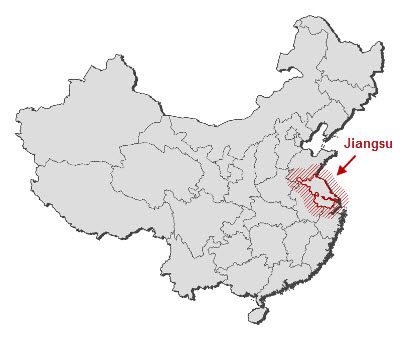Best in Manufacturing – March 4, 2018
Each Sunday, we publish a list of top articles and other content related to manufacturing in areas like quality control, product development, supply chain management, sourcing, auditing and law.
1. The super-mobile factory of the future
By and large, manufacturing takes place in one fixed location. Factories don’t have wheels to enable them to zip around from place to place. They can’t get closer to their target markets on a whim. But that may change in the coming years.
 Nokia recently tested its “factory in a box” concept. Essentially, an assembly line is housed in the same type of steel container that underlies global trade (see #4). The recent production test was for electronics, but the future may also hold the potential to manufacture other product types.
Nokia recently tested its “factory in a box” concept. Essentially, an assembly line is housed in the same type of steel container that underlies global trade (see #4). The recent production test was for electronics, but the future may also hold the potential to manufacture other product types.
Just like how steel containers are stacked and used to transport goods across the sea, firms could similarly buy or rent these mini-mobile factories and ship them en masse to a desired location. Once there, the factories could begin churning out goods in close proximity to their intended market.
The featured article mentions some use cases for the mobile factory, such as:
- Building for “country of origin” requirements: does your product need to be “Made in X”? Ship the mobile factory to “X” and have your products made on the spot!
- Introducing new products quickly in a target market: getting products to customers swiftly can make all the difference in establishing a market lead. The mobile factory can provide the extra speed that might reward you the “first mover” advantage.
- Aiding with providing goods for disaster recovery: a mobile factory delivered to a community recently wrecked by a natural disaster could help quickly provide relief by locally manufacturing basic products needed for survival.
What do you see as the potential for the “factory in a box”? Let us know in the comments below!
To read the full article that covers this topic, check out the article in the link below:
Nokia's "Conscious Factory in a Box" Concept Anticipates Fast-changing Manufacturing Needs of the Future – Editorial staff, Nokia
2. How audits may actually hold back better quality
When a problem is encountered at a manufacturing facility, a company’s first instinct might be to yell, “SCHEDULE AN AUDIT! FIND OUT WHAT HAPPENED!”
Improving quality requires more than an arbitrary audit that simply identifies issues and places blame. For the audit to be truly effective at improving product quality, firms need to act on the findings.
As the author of this featured article explains, audits sometimes have the unintentional effect of delaying fixes for root causes of problems. They sometimes also don’t really identify the areas capable of improvement. The author cites these barriers to better quality because of audits:
- Reactive audit approaches: pointing out specific defects once they’ve occurred signals that product rework is necessary. But what about a process audit that stops that error from happening again? Better quality is achieved by moving from a reactive to proactive approach to solving the quality issue.
- Not including the right people: while a quality control team is obviously very important for improving product quality, involving other company members, like members of the engineering team, can lead to more observations that lead to overall improvements.
- Pencil-whipping and data integrity: ever see a form so long that you just want to rush through checking off all the items and breeze through it? This might happen with your audits and could jeopardize the data you’re hoping to gain from them.
- Outdated audit checklists: without relevant audit checklists, how can an auditor evaluate effectively? Up-to-date audit and quality control checklists are essential for ensuring the right standards are used as a basis of evaluation.
- And more!
Ineffective, rubber-stamp audits are a waste of time, effort and money. To get an idea how to move away from audits like this and more toward operational excellence, check out the full article in the link below:
Seven Ways Audits Unintentionally Block Visibility into Quality – Paul Foster, Quality Digest
3. “Emotional interest underwear”
What exactly does the title above mean? Lingerie. And before your mind wanders—no, I’m not about to discuss lingerie like I’m a writer for Playboy magazine. 
This featured article examines the town Dongwangji in China’s Jiangsu province. The town is home to roughly 600 lingerie producers. The town used to be dotted with rice fields. Nowadays, it churns out lingerie. With so many suppliers in one place, the town is potentially optimizing its supply chain for “emotional interest underwear”, which might result in better prices and lead times for importers.
Dongwangji is an example of an industrial cluster, a town that focuses on a particular category of product, with the backing of local officials. Instead of living in poverty, the town has improved its economic conditions through manufacturing.
These feature towns are an objective of the Chinese National Development and Reform Commission (NDRC). In 2016, the NDRC approved 403 feature towns and it wants to develop 1,000 of these by 2020.
Some towns that already exist for certain products are focused on fireworks. Some on jeans. Some on socks. The list continues. What these places and the plan to continue fostering them represent are opportunities for importers to improve their supply chains.
If you’d like to read more about Dongwangji and feature towns, you can follow the link below:
The Chinese Town Home to Hundreds of Lingerie Producers – Gabriel Wildao and Yizhen Jia, Ozy.com
4. Making the fashion industry more sustainable
As you glance at store shelves, you notice pants that are to your liking. You buy them and go home.
Two weeks later, your friends are all wearing a different style of pants—you’re the only one without them. You go back to the store and buy a pair. A month later, this process repeats. You return to the store to buy the latest, hippest style. And this is happening all over your country, constantly.
On the surface, these transactions may seem menial. Like nothing is wrong. But people vote with their money. In the context of sustainability, the transactions represent constant battering of the environment and support for fast fashion. For every pair bought, that’s more indication to a business to keep supplying them.
The problem here isn’t the buying and selling that constitutes commerce. The issue is hyper-consumption. While that might make some business owners salivate, the reality is that there are consequences for demanding limitless quantities of goods from a world with finite resources.
A circular economy
Currently, the fashion industry is poised to consume a quarter of the world’s carbon budget. That’s a significant amount of carbon for just one industry.
How is this sort of pressure on the planet minimized? Well, imagine if once you finished with your clothing (or any product [within reason], for that matter), it gets used again somehow.
Maybe you give it to a family member or someone homeless. Or maybe you give it to a factory to reprocess the material to make something new. Whatever the case, ensuring the clothing is utilized and doesn’t simply end up in the dump is a step toward better protecting the world.
Solving climate change and sufficiently addressing humanity’s influence on the planet is much more complicated than simply reusing clothing. But it’s a start.
This featured article references the Ellen MacArthur Foundation (EMF), which is a charity that promotes this sort of circular economy and aims to reduce rampant waste and reckless consumerism. One way the EMF is pursuing this goal is through its circular textiles initiative.
In the quest for greater sustainability, programs like those offered by the EMF and commitments to cradle-to-cradle design principles will hopefully bring about a greener approach to how we treat our planet.
If you’d like to learn more about addressing sustainability in the fashion industry, you can check out the full article in the link below:
The Clothing Industry Is Set to Consume a Quarter of the Global Carbon Supply by 2050 – Michelle Chen, The Nation
5. White paper: blockchain in manufacturing supply chains
There’s certainly potential for blockchain in global supply chains. Yet this featured article mentions how blockchain is “immature”.
Other industries, like finance, have already acted on blockchain via Bitcoin and initial coin offerings (ICOs). So where’s blockchain in manufacturing supply chains?
Trevor Stansbury, the CEO of Supply Dynamics who was interviewed for this featured article, said that there are more barriers to using blockchain for supply chains, such as:
…the material nature of the goods being tracked, the number of tiers in the chain and the preponderance of unstructured data.
Companies have started to develop applications for supply chains (see #4). And although blockchain might have intimidating barriers to entry and seem far off, it’s coming. It’s not a fad that’s just going to fade away. Blockchain will become an essential part of the transformation to Industry 4.0.
Understanding blockchain might be the key to an importer or manufacturer’s future success and competitiveness. This featured article links to a white paper about blockchain in manufacturing supply chains. If you’re curious, feel free to click the link below to get the white paper:
Blockchain for the Manufacturing Supply Chain – Editorial Staff, Smart Industry
We’re constantly scanning the web for top manufacturing stories and news. If you’d like to submit an article for consideration for our weekly Best in Manufacturing, send us a message and let us know.







